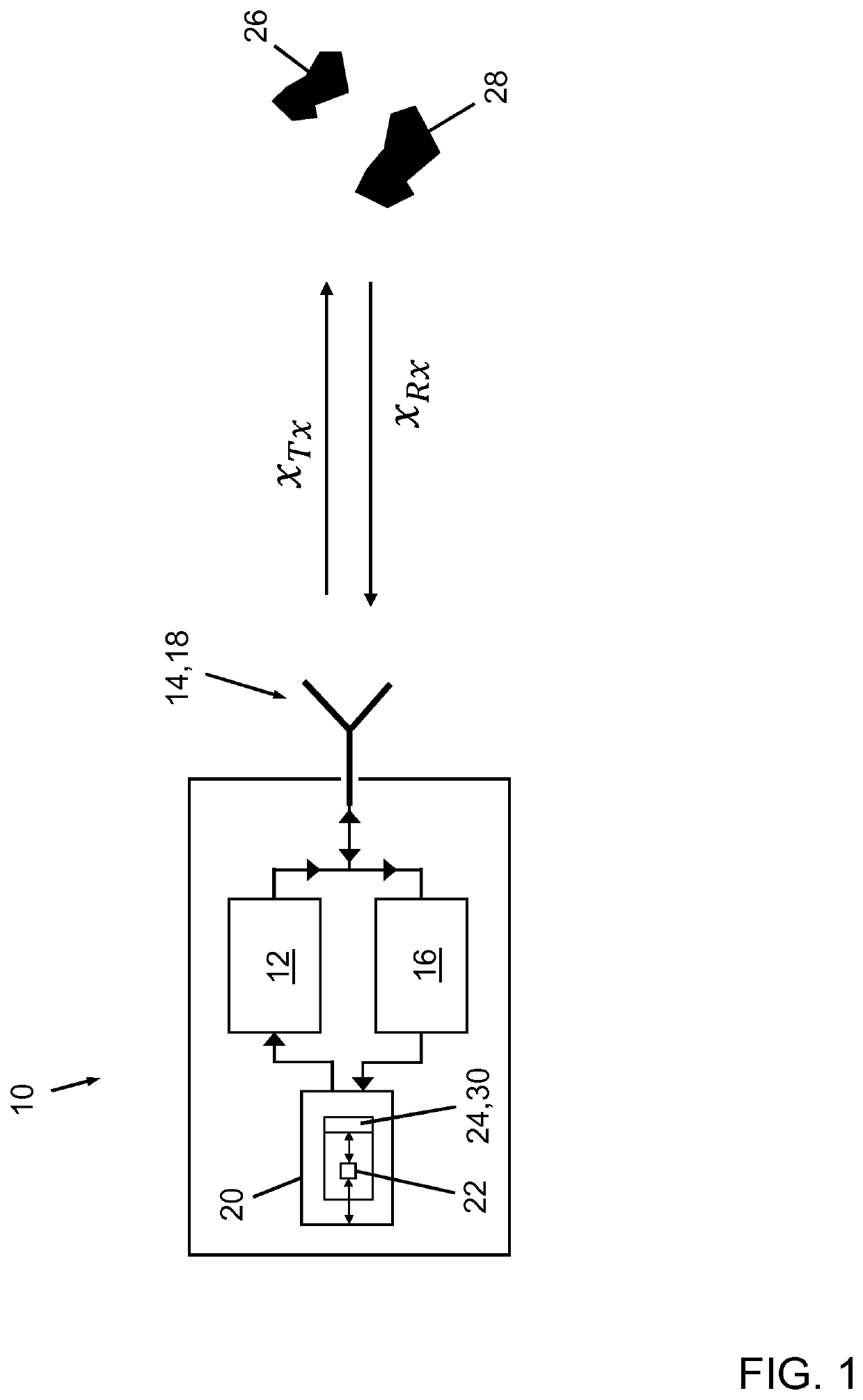Interference mitigation in automotive radar systems by artificial doppler modulation
a technology of automotive radar and doppler modulation, applied in the direction of reradiation, measurement devices, instruments, etc., can solve problems such as increasing noise levels, and achieve the effect of improving the mitigation of potential interferen
- Summary
- Abstract
- Description
- Claims
- Application Information
AI Technical Summary
Benefits of technology
Problems solved by technology
Method used
Image
Examples
Embodiment Construction
[0052]FIG. 1 schematically illustrates a configuration of an automotive radar system 10 in accordance with an embodiment of the invention and targets 26, 28 of a scene. The automotive radar system 10 is designed as a frequency-modulated continuous wave (FMCW) radar system and is installable in a vehicle such as a passenger car (not shown).
[0053]The automotive radar system 10 comprises a radar transmitter unit 12, a radar receiving unit 16 and an evaluation and control unit 20 that is connected by data links to both the radar transmitter unit 12 and the radar receiving unit 16.
[0054]The radar transmitter unit 12 includes a radar transmit antenna 14 that is directed towards the scene. The radar receiving unit 16 includes a radar receiving antenna 18 that is also directed towards the scene. The radar transmit antenna 14 and the radar receiving antenna 18 are co-located in a monostatic arrangement, which is indicated in FIG. 1 by use of a combined symbol. In this specific embodiment, th...
PUM
 Login to View More
Login to View More Abstract
Description
Claims
Application Information
 Login to View More
Login to View More - R&D
- Intellectual Property
- Life Sciences
- Materials
- Tech Scout
- Unparalleled Data Quality
- Higher Quality Content
- 60% Fewer Hallucinations
Browse by: Latest US Patents, China's latest patents, Technical Efficacy Thesaurus, Application Domain, Technology Topic, Popular Technical Reports.
© 2025 PatSnap. All rights reserved.Legal|Privacy policy|Modern Slavery Act Transparency Statement|Sitemap|About US| Contact US: help@patsnap.com


